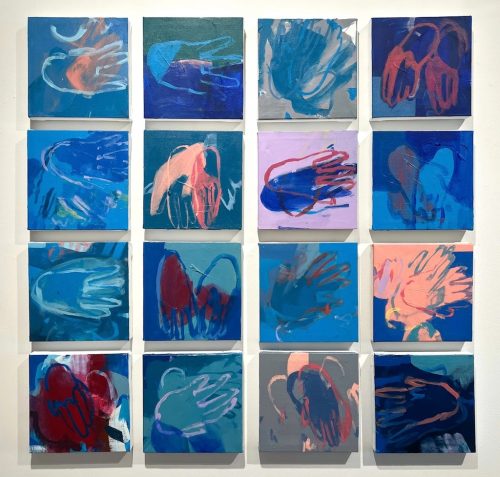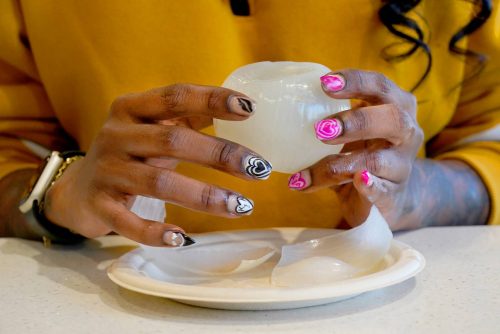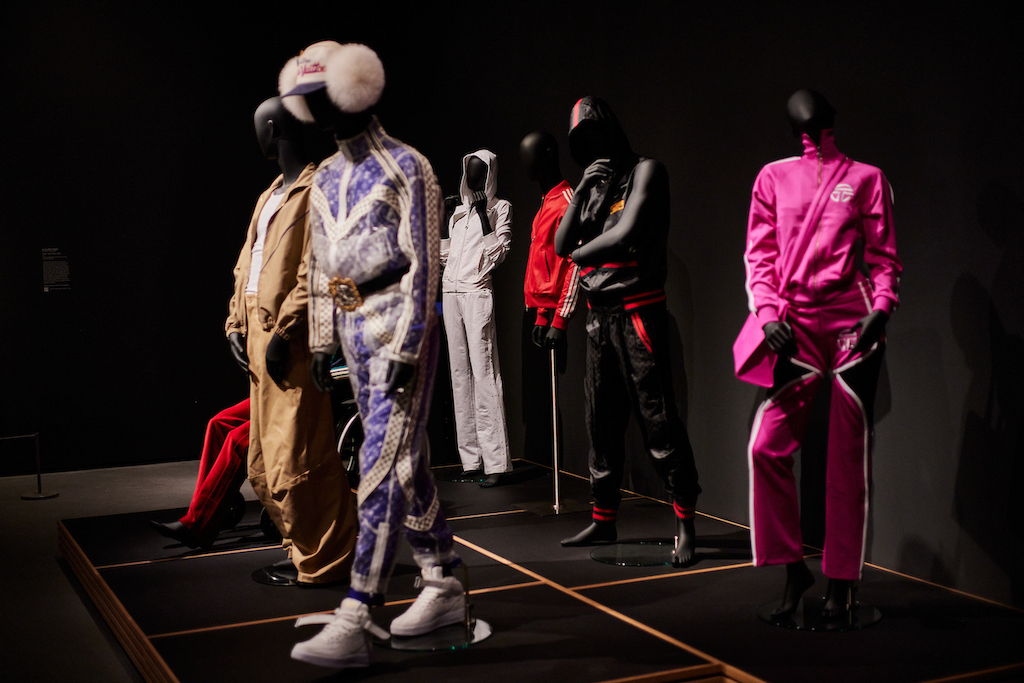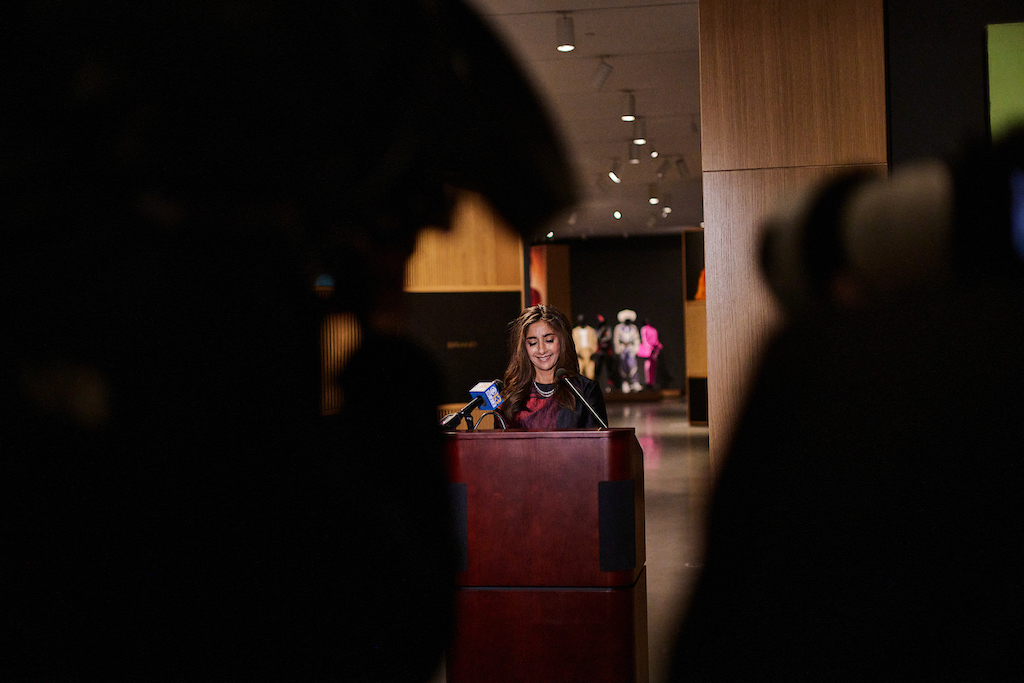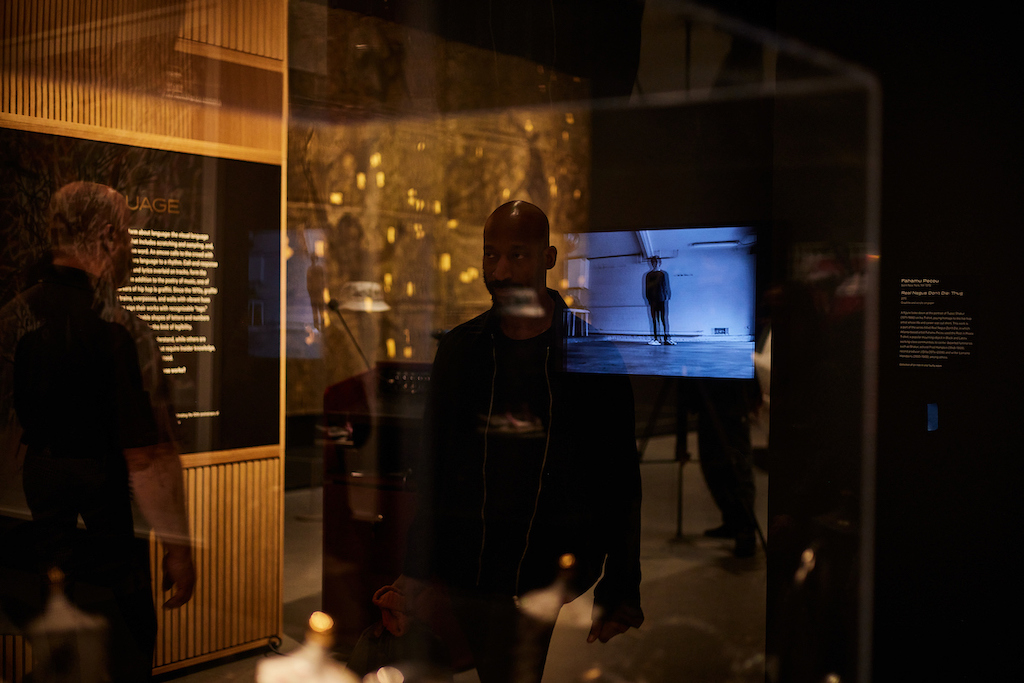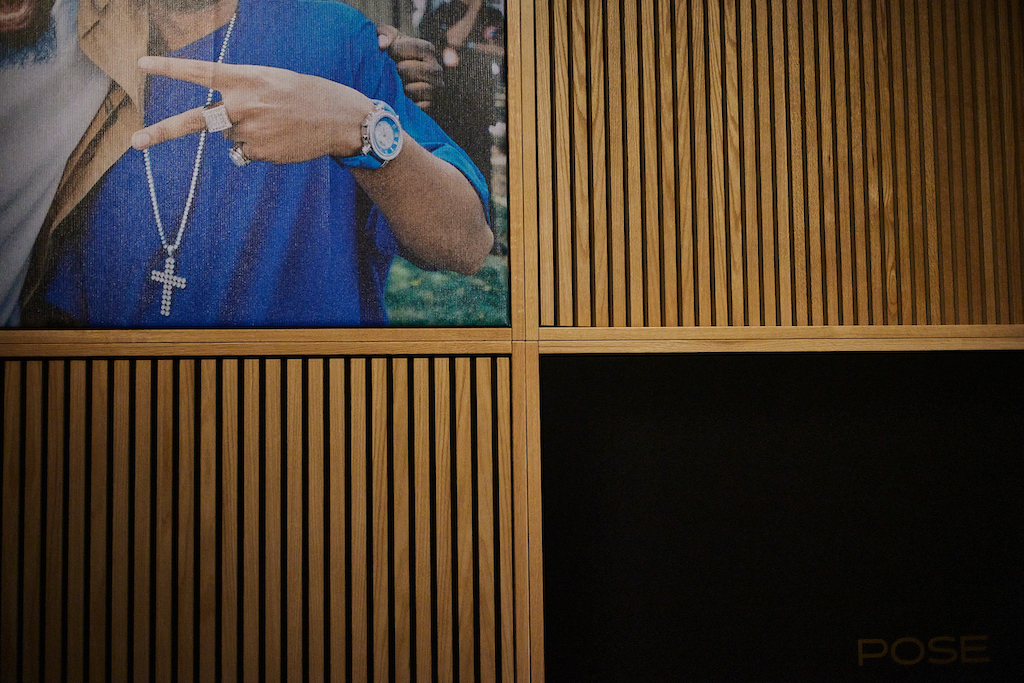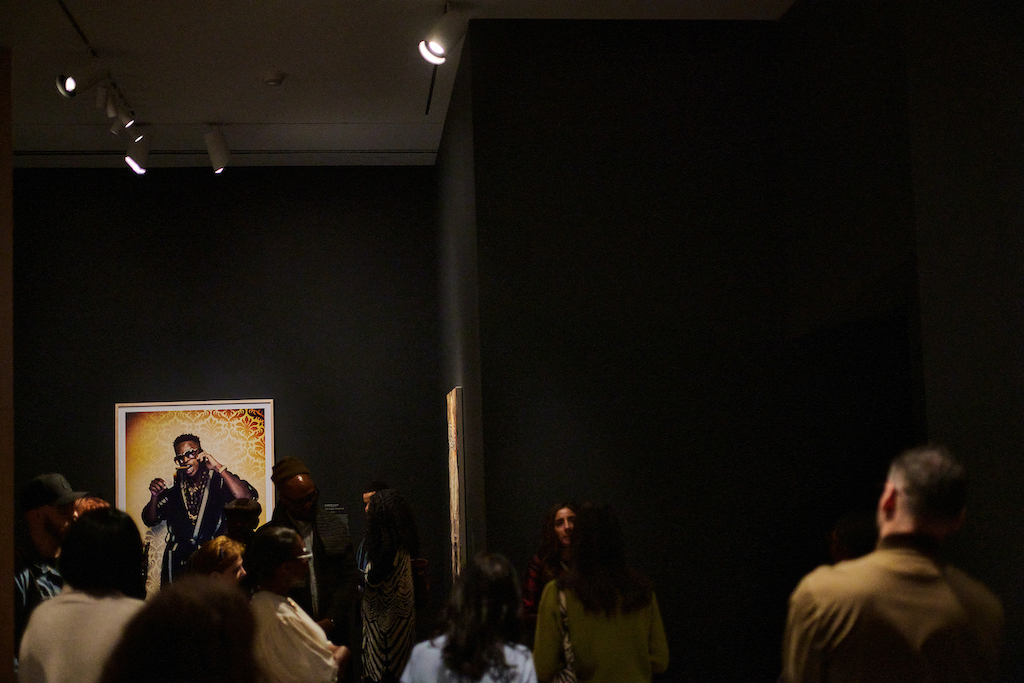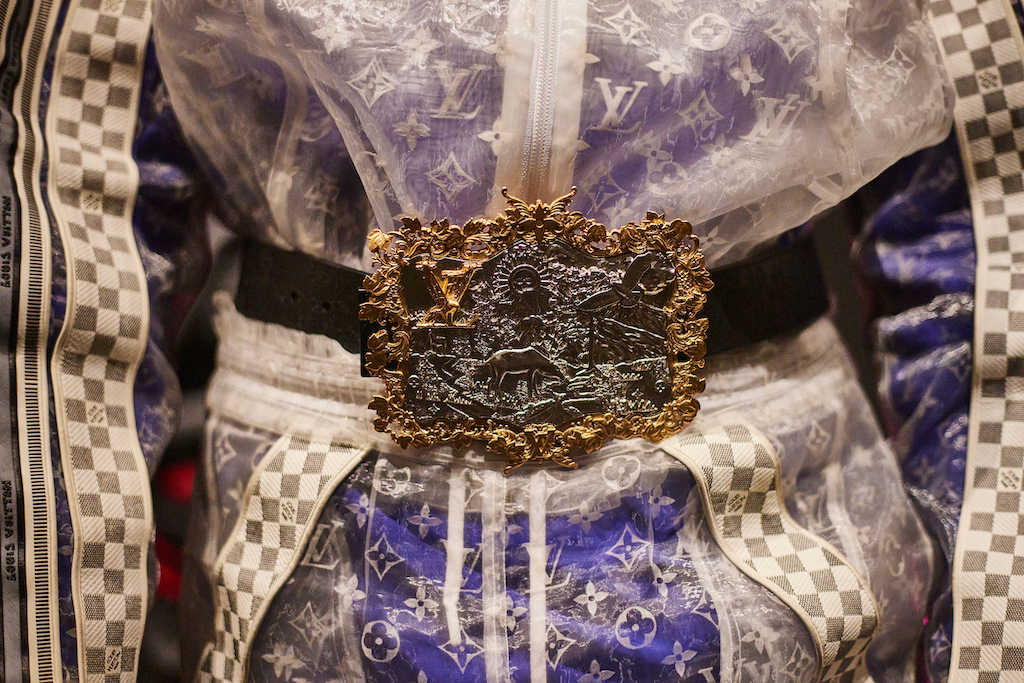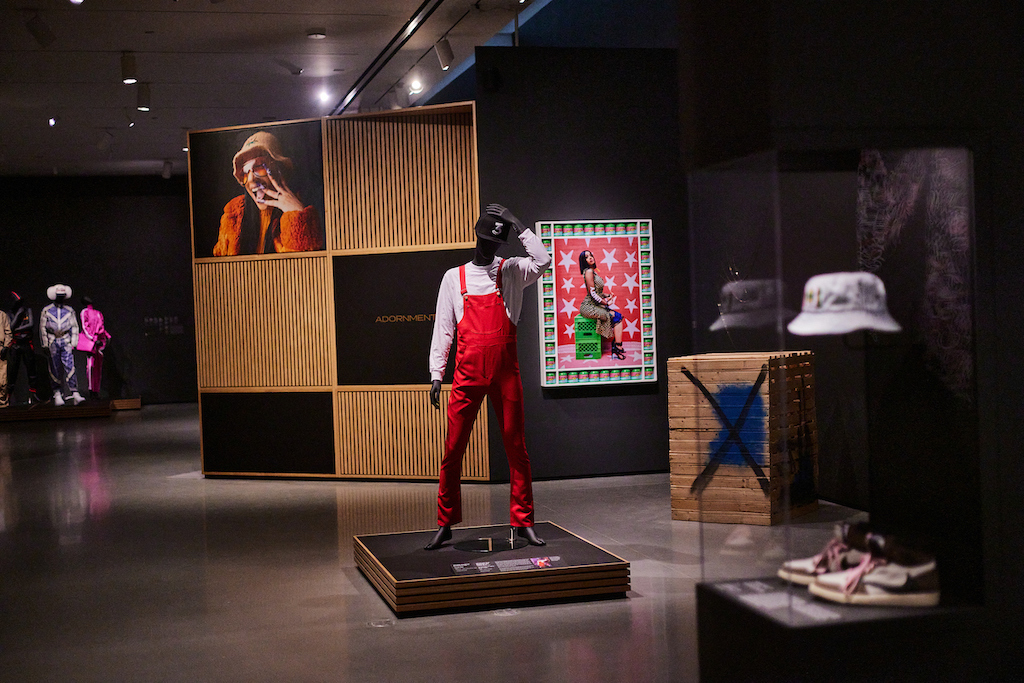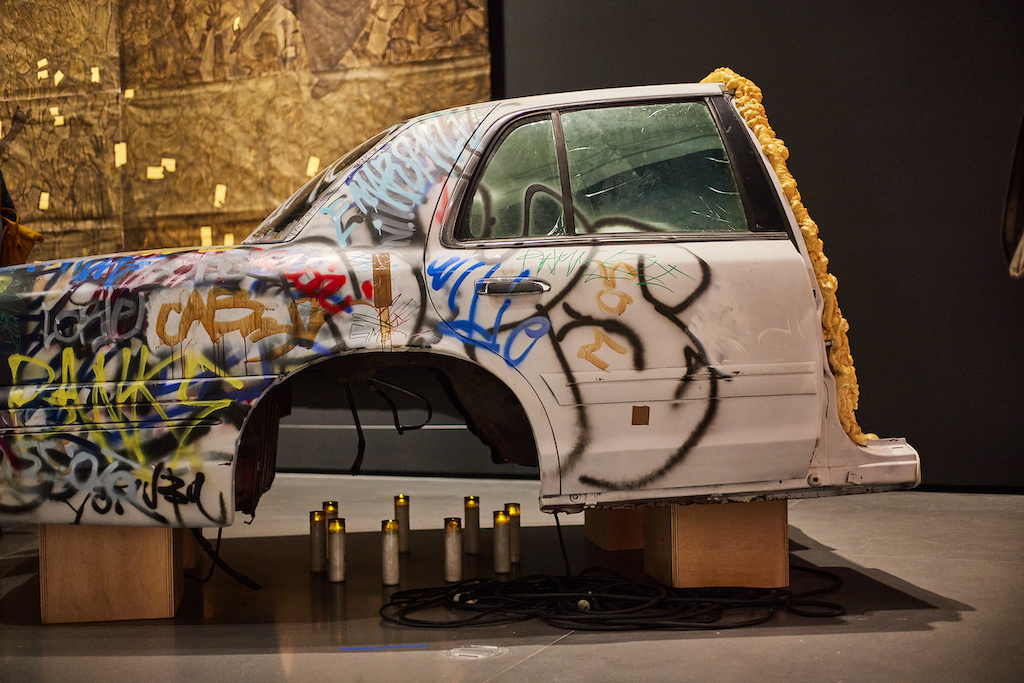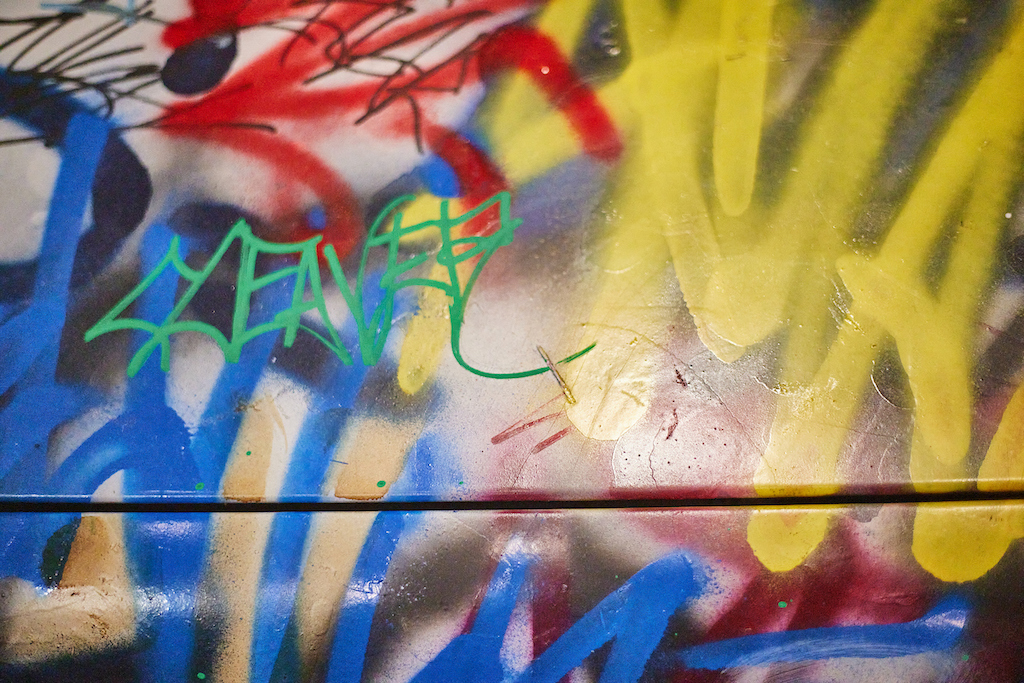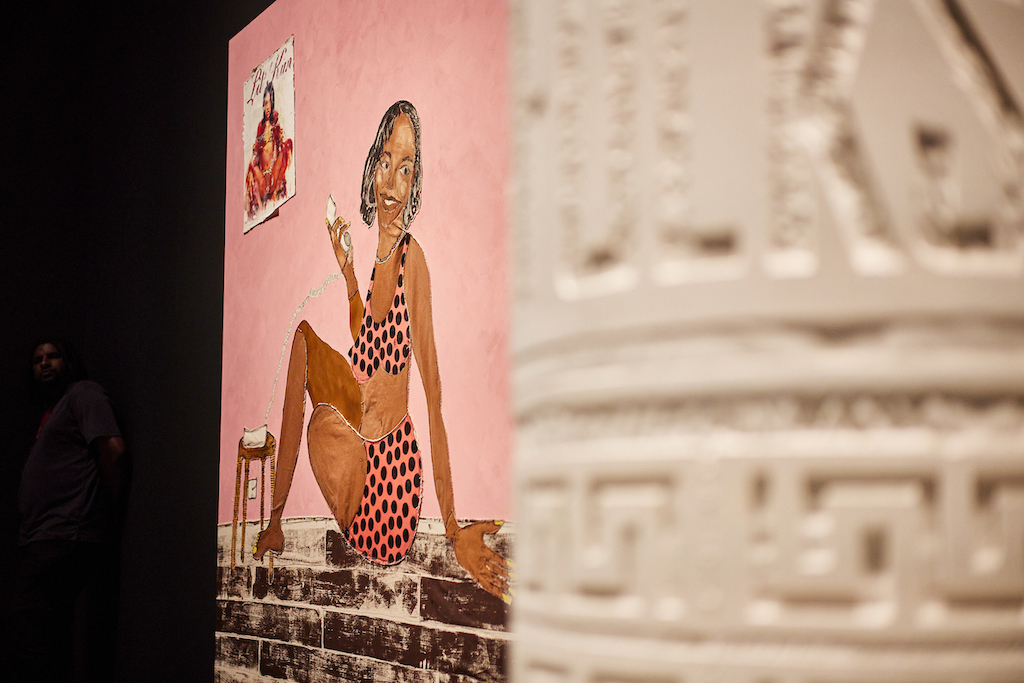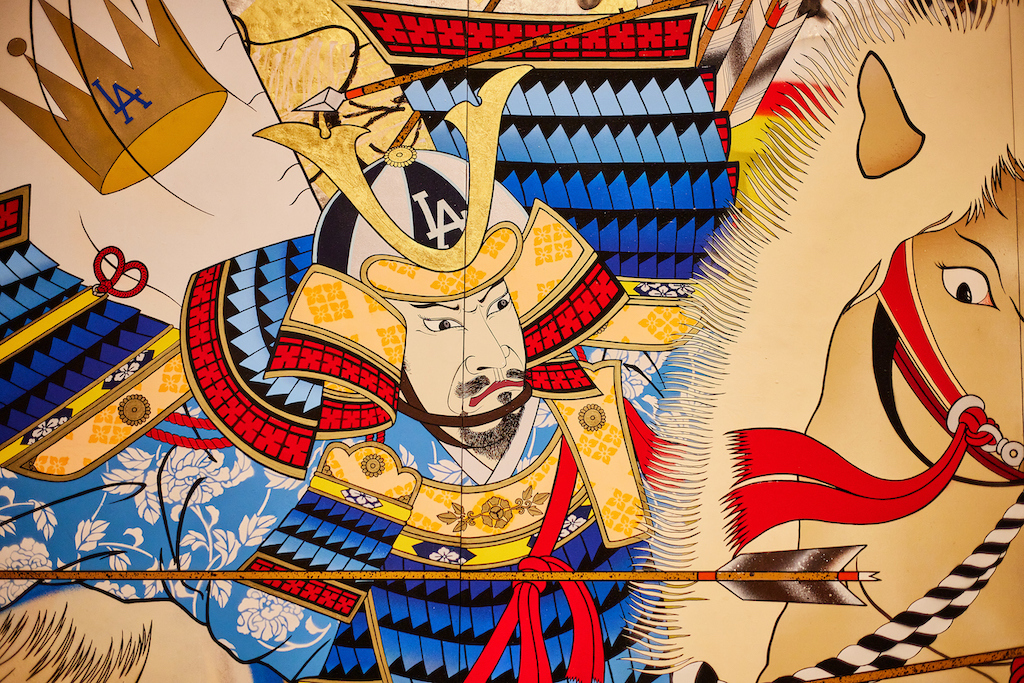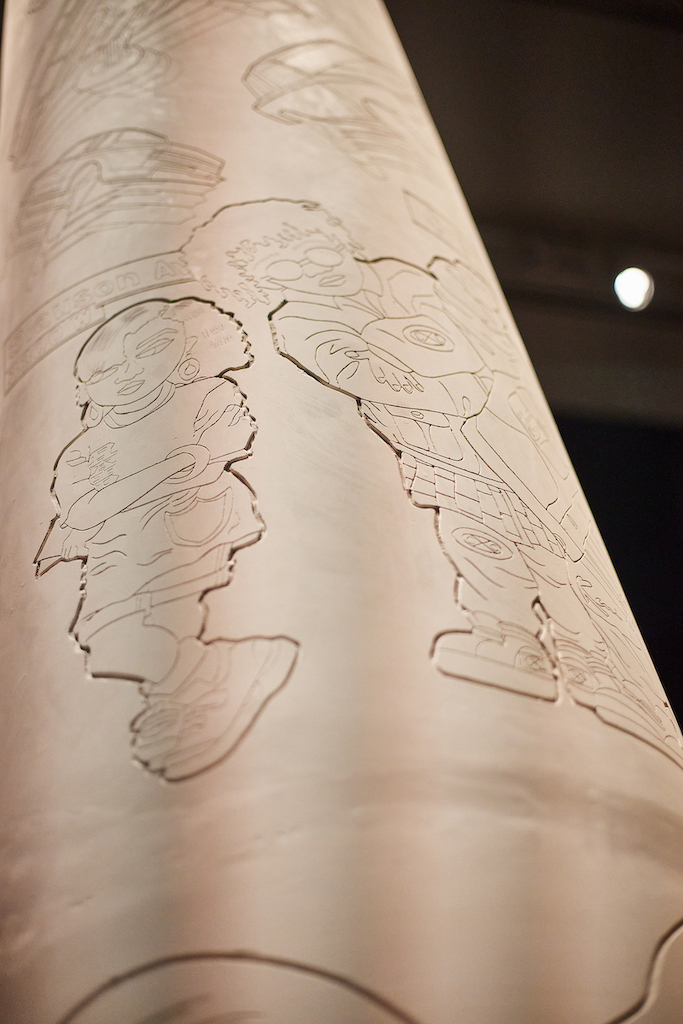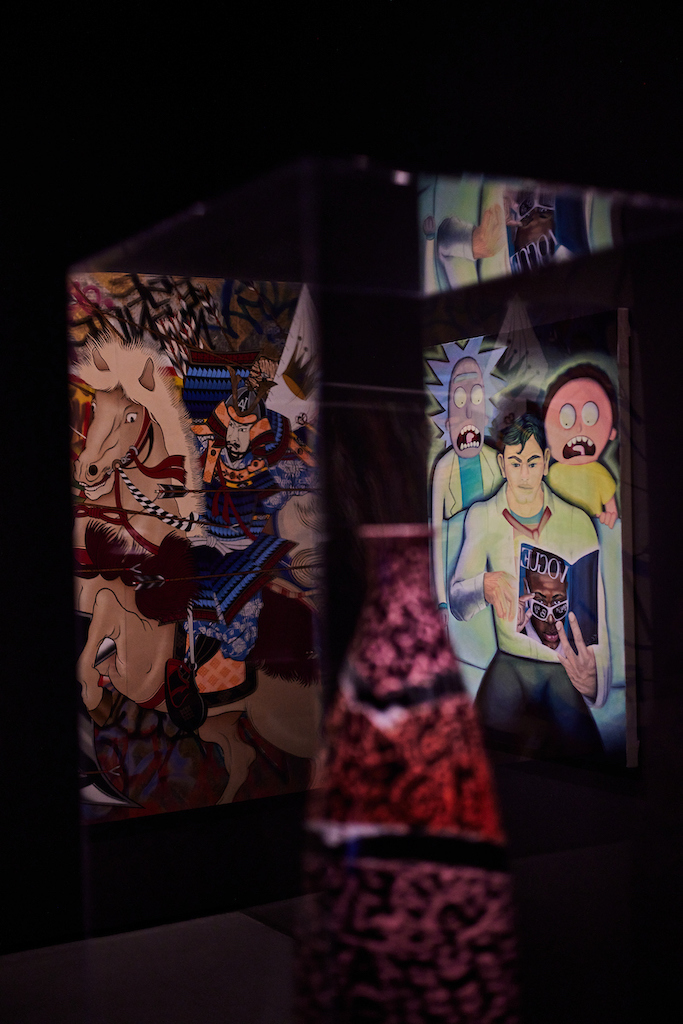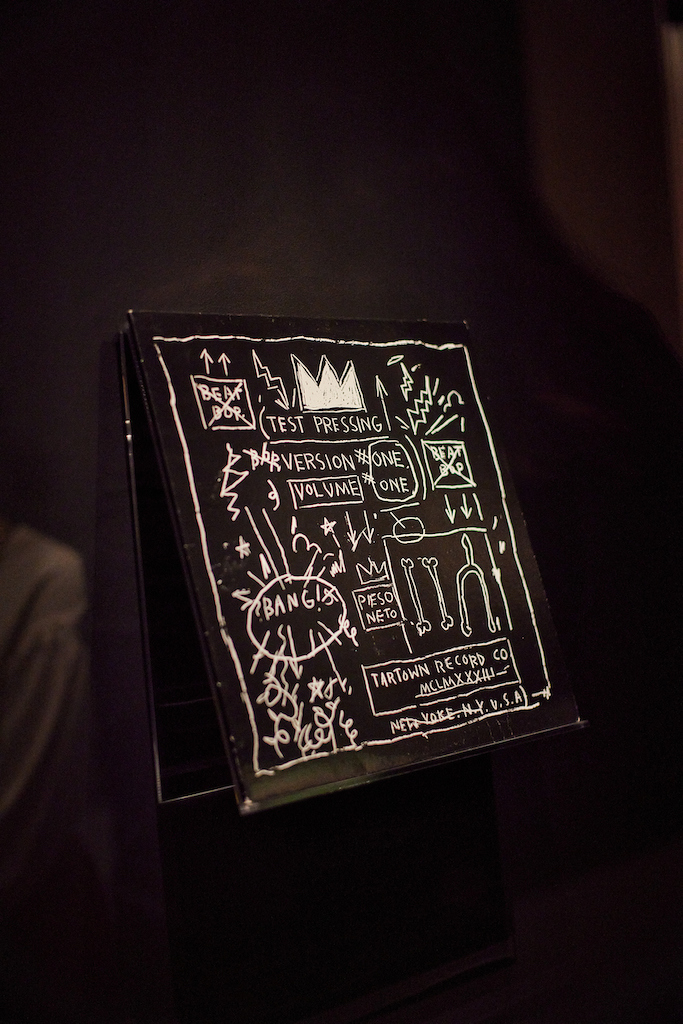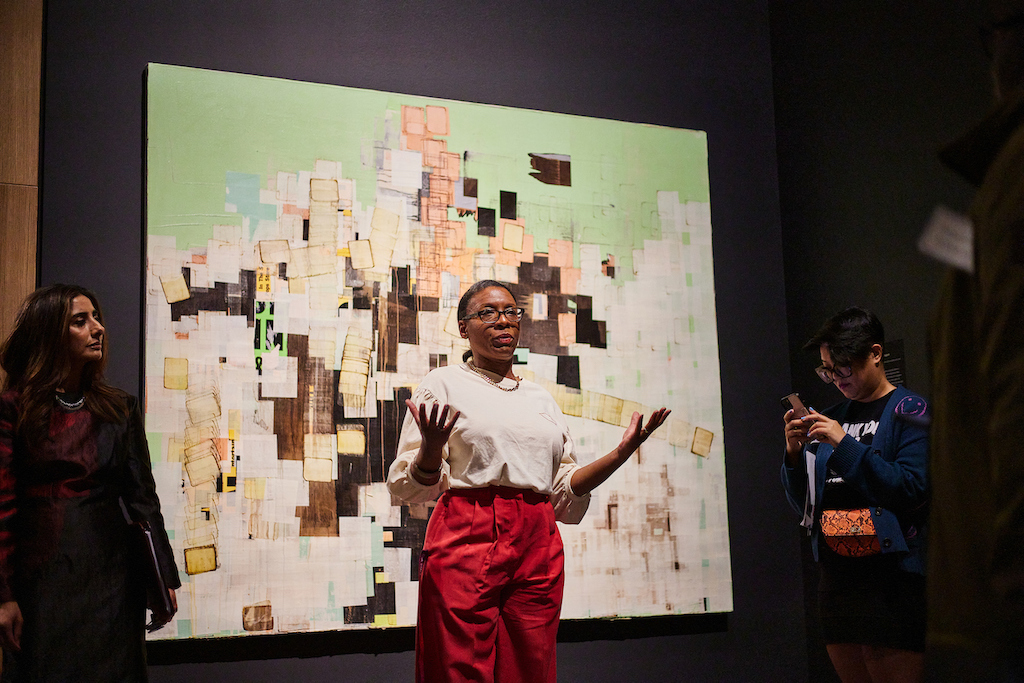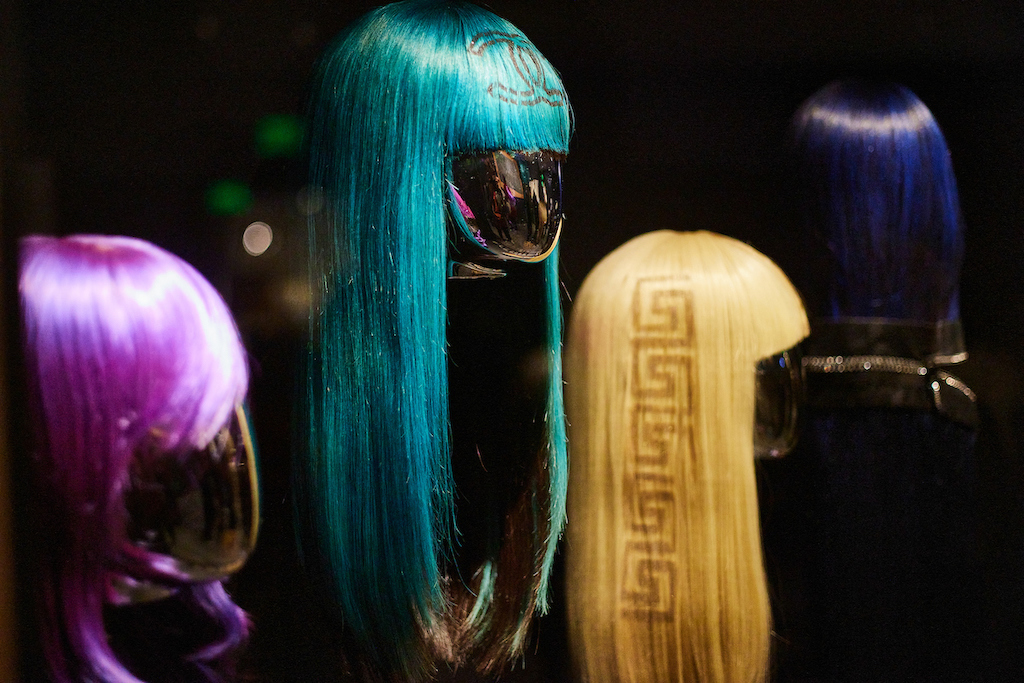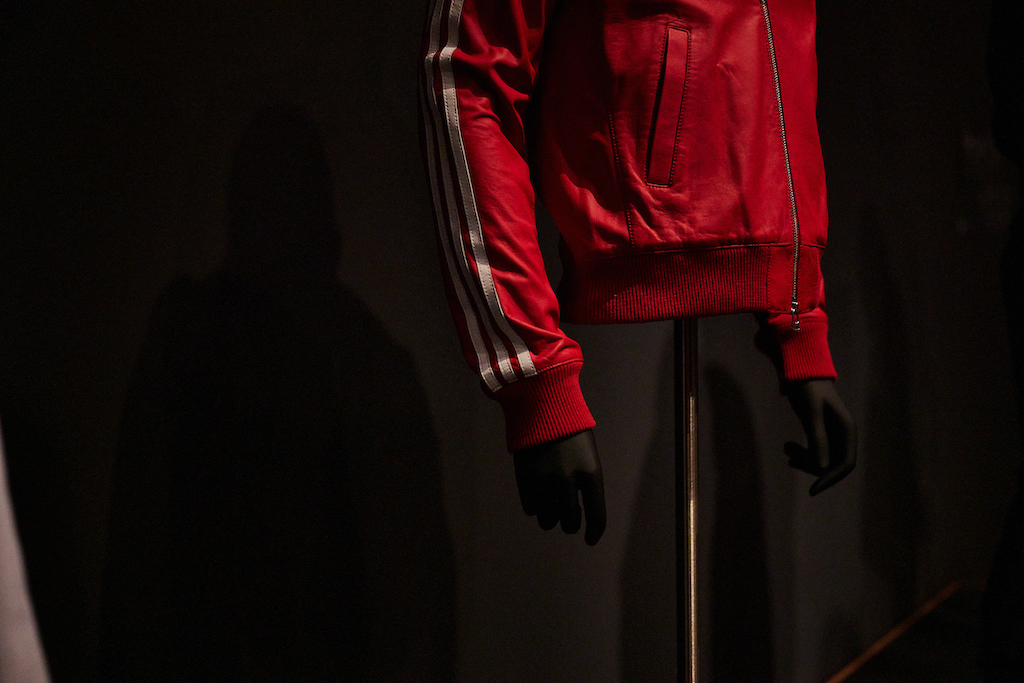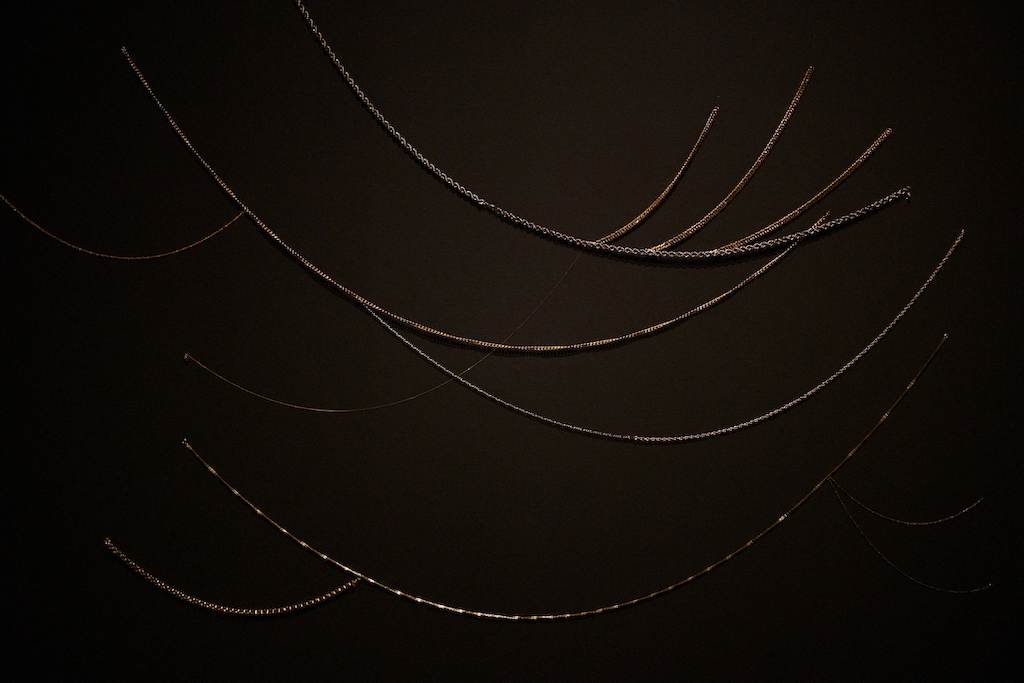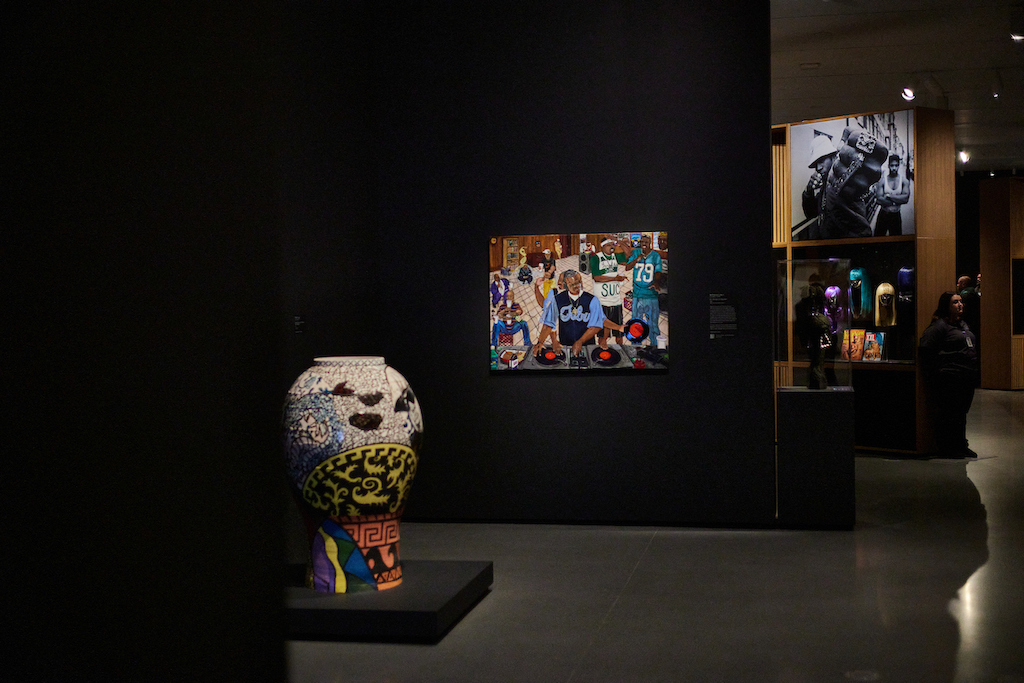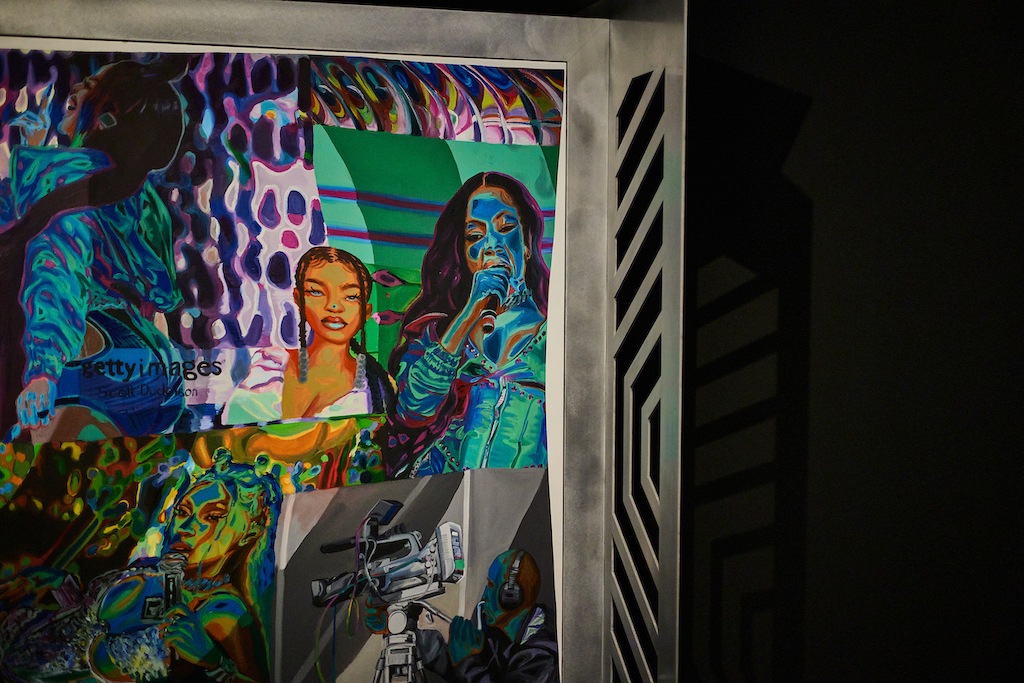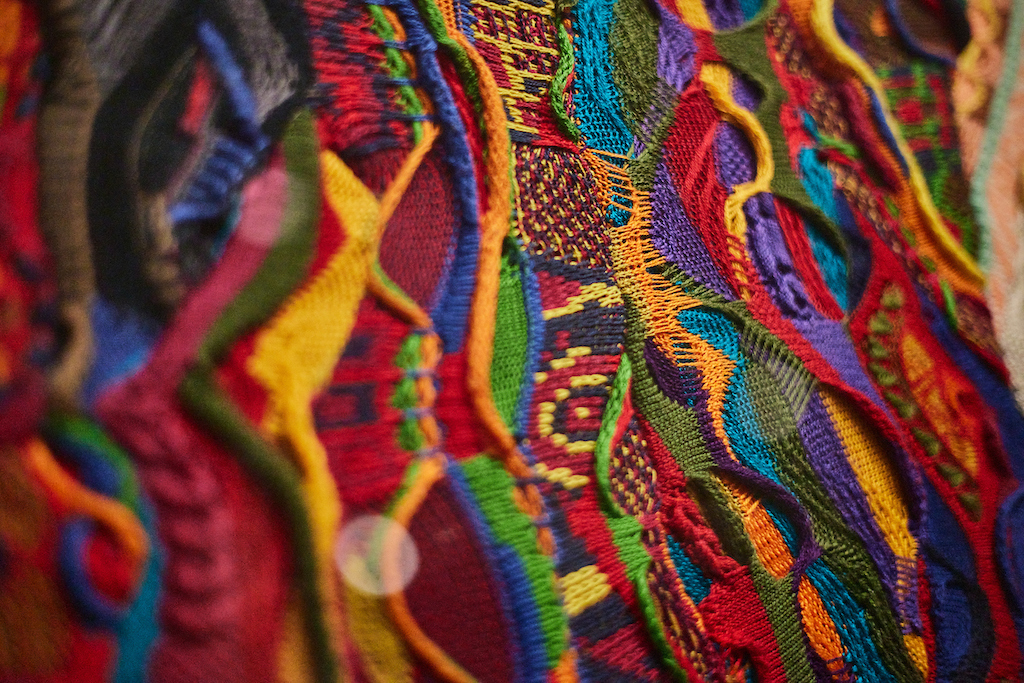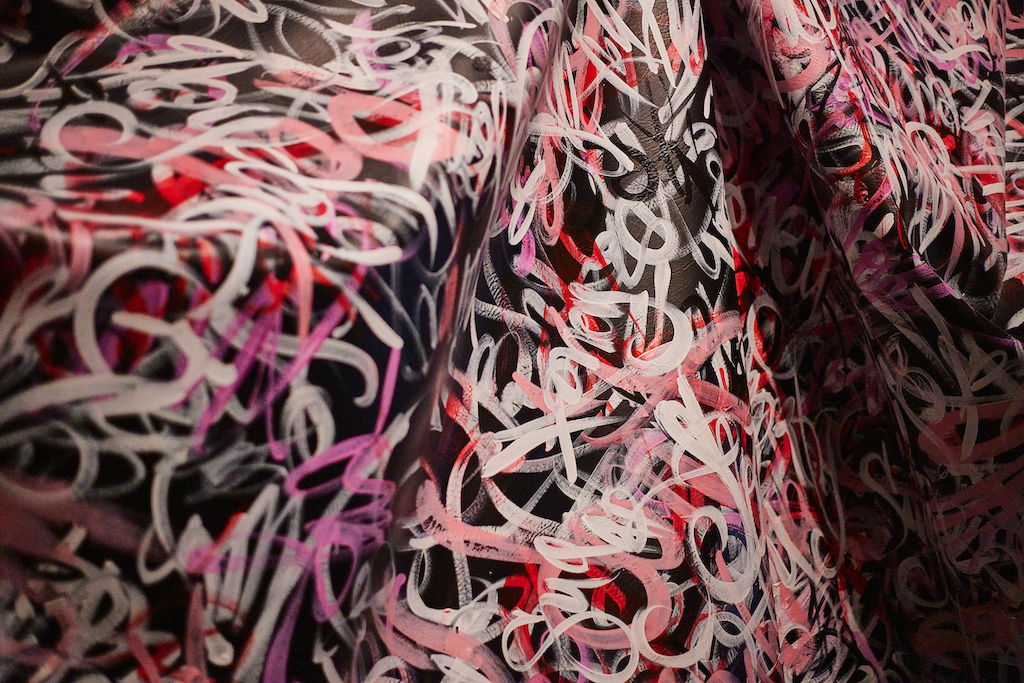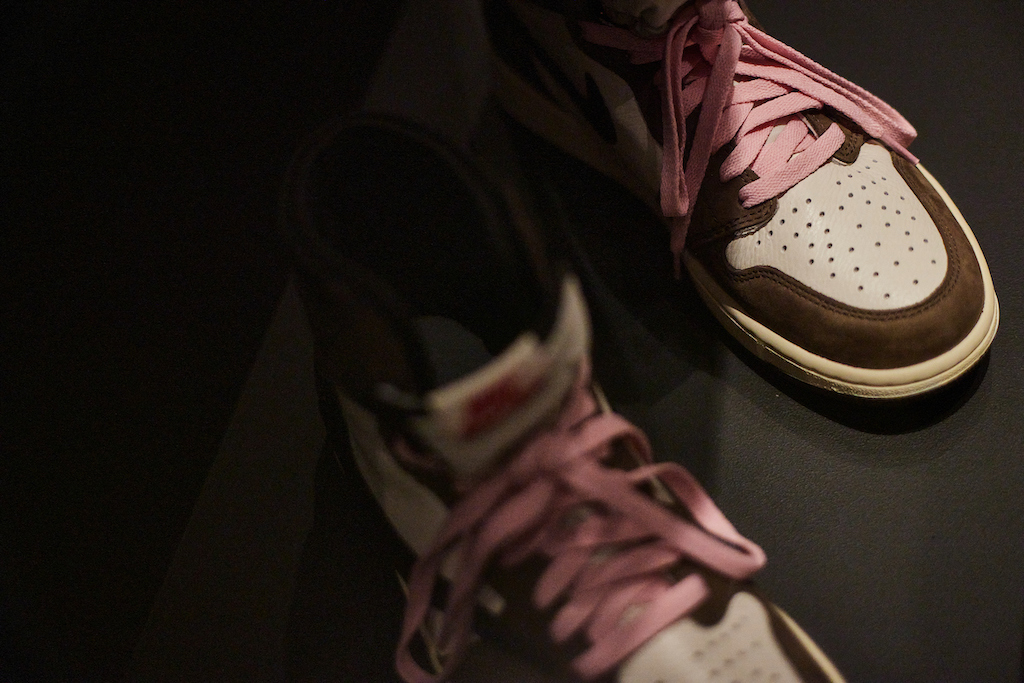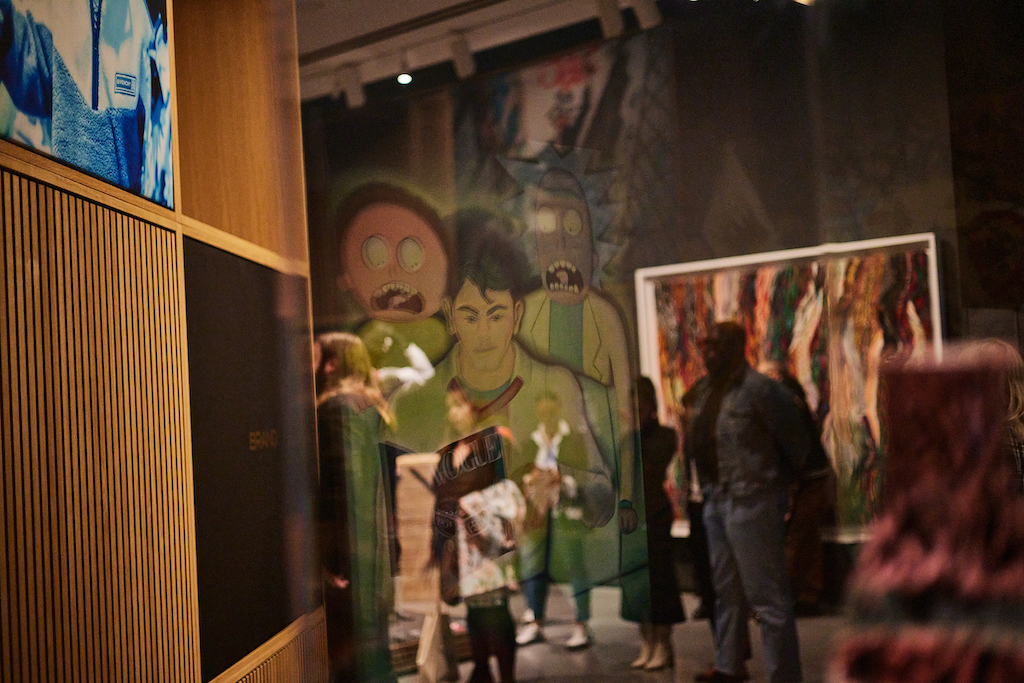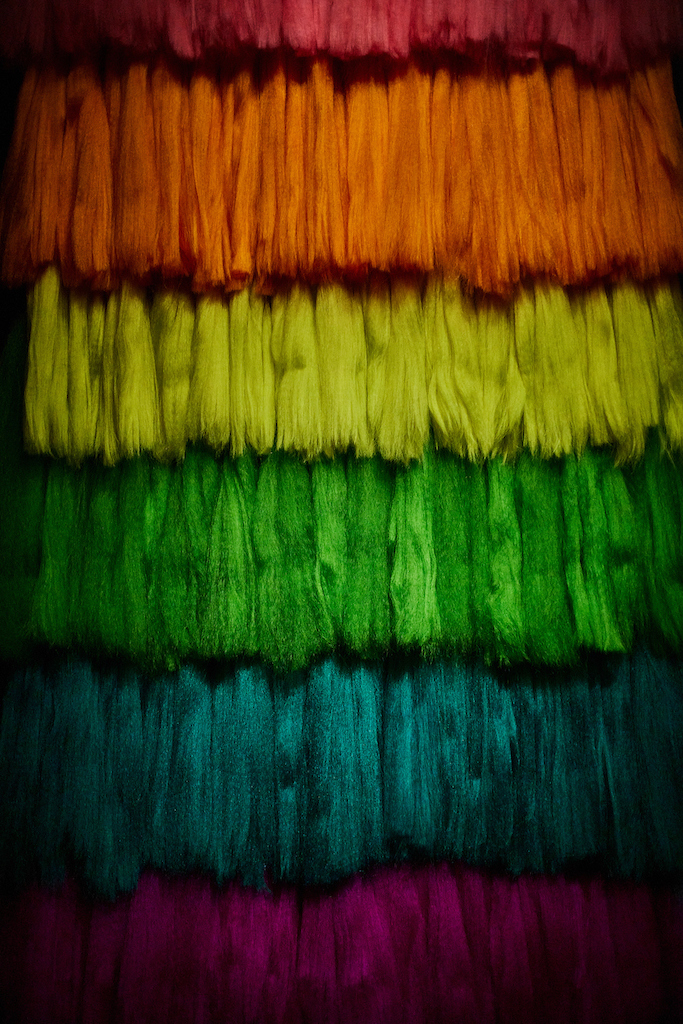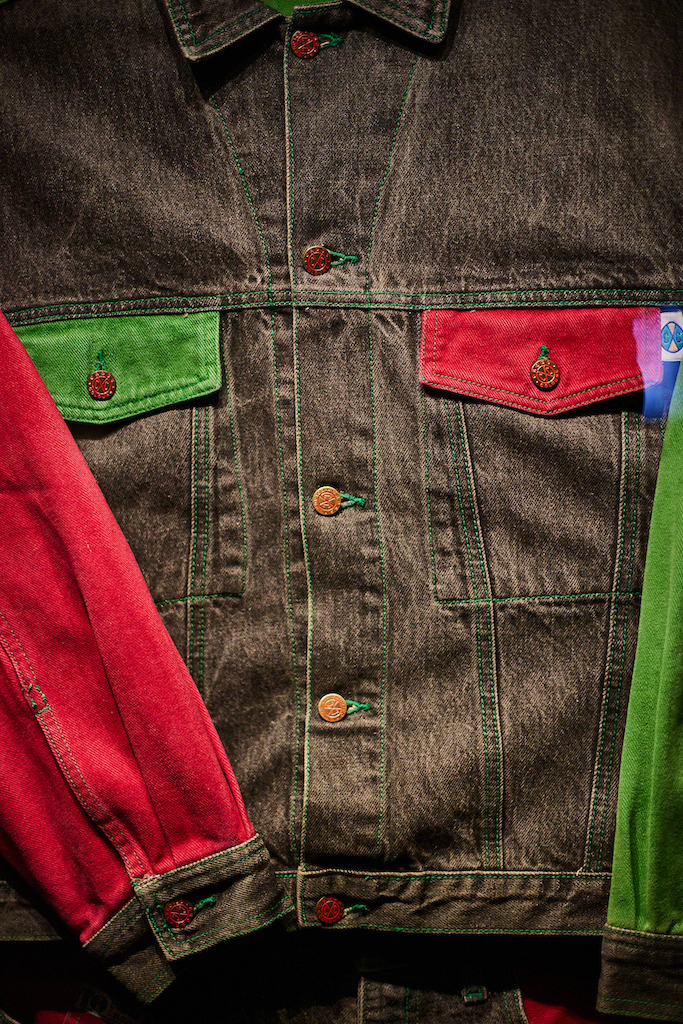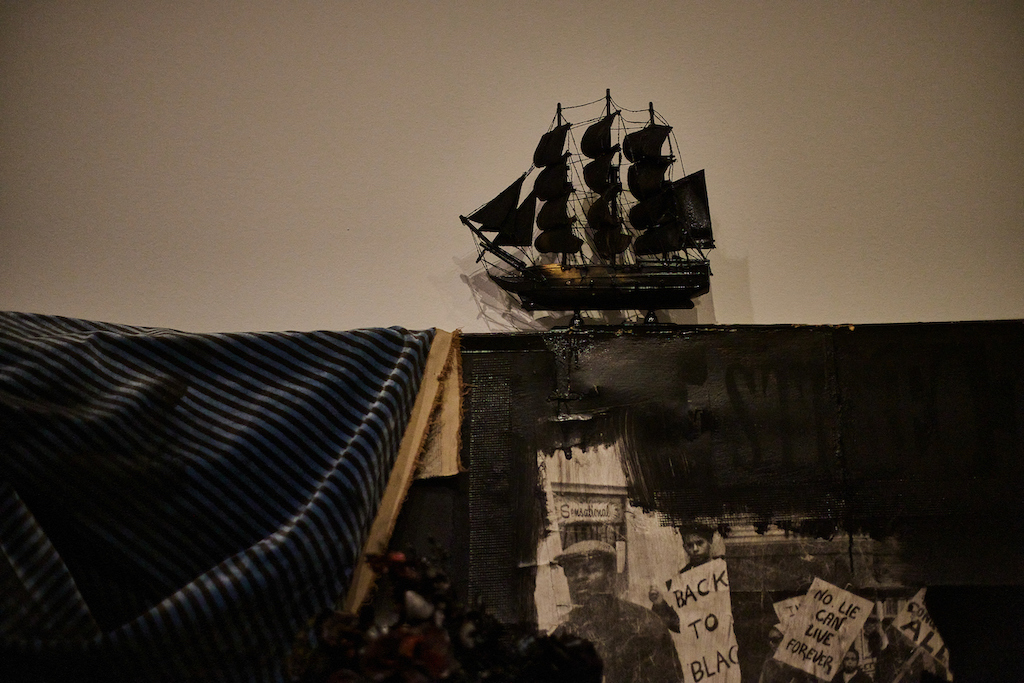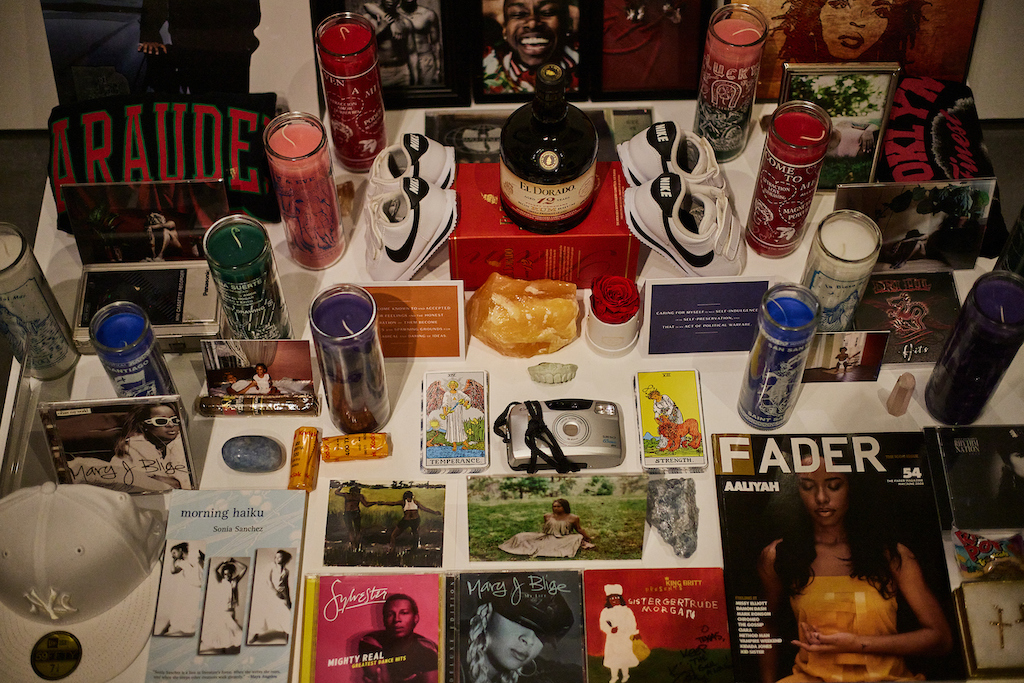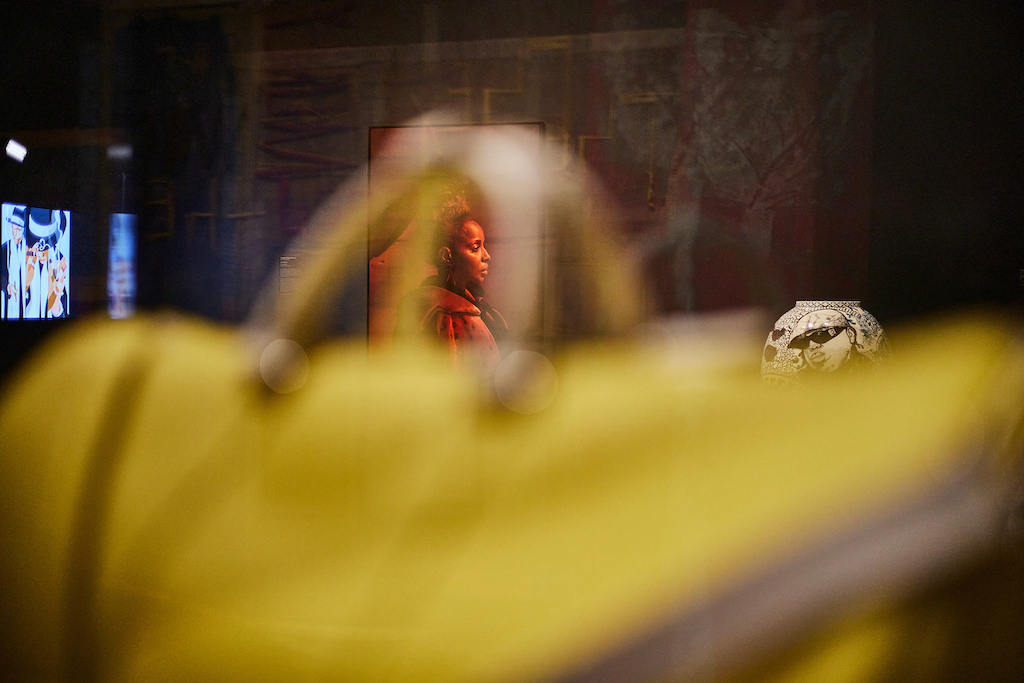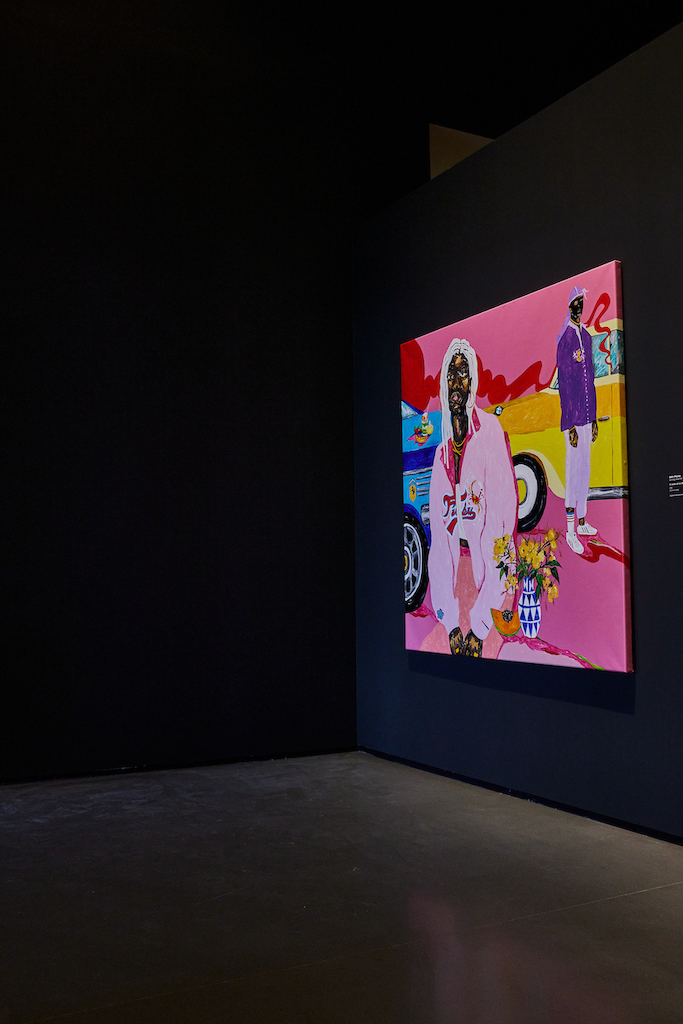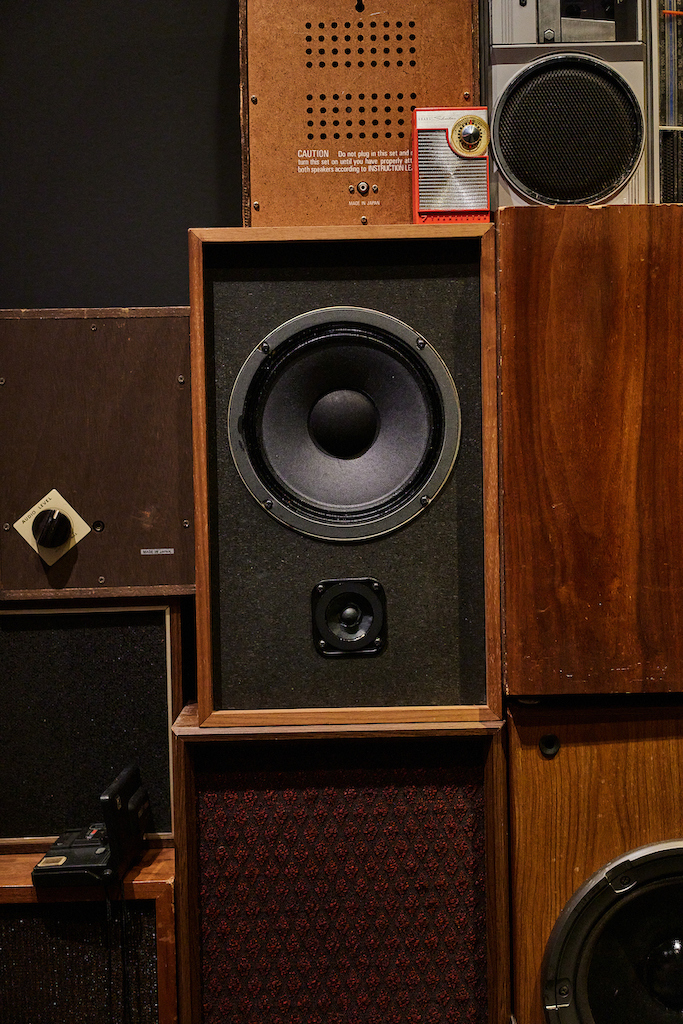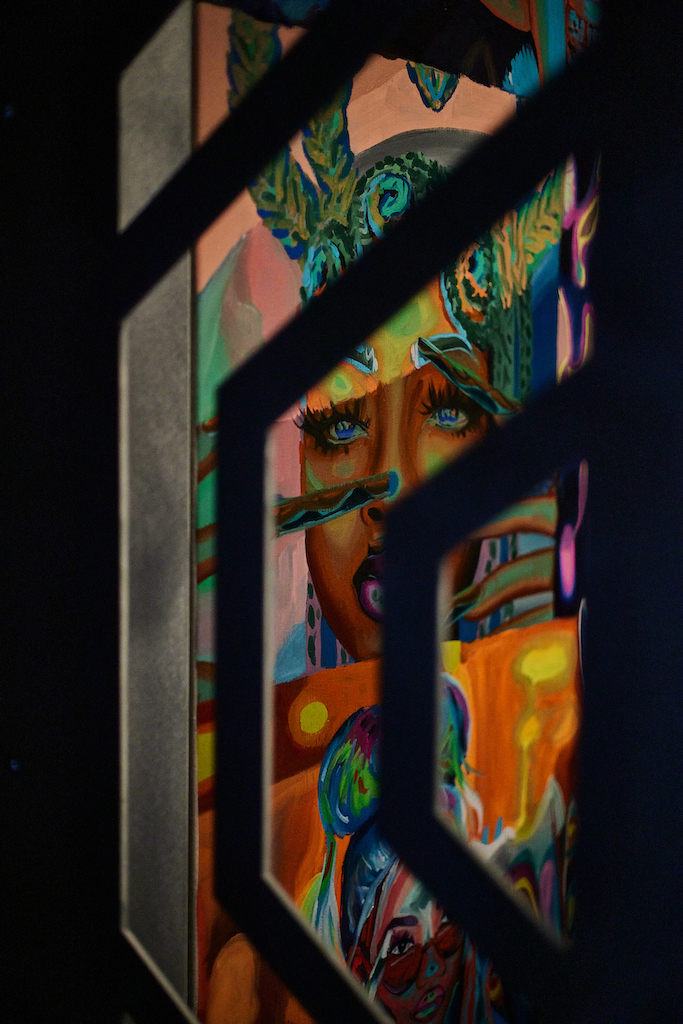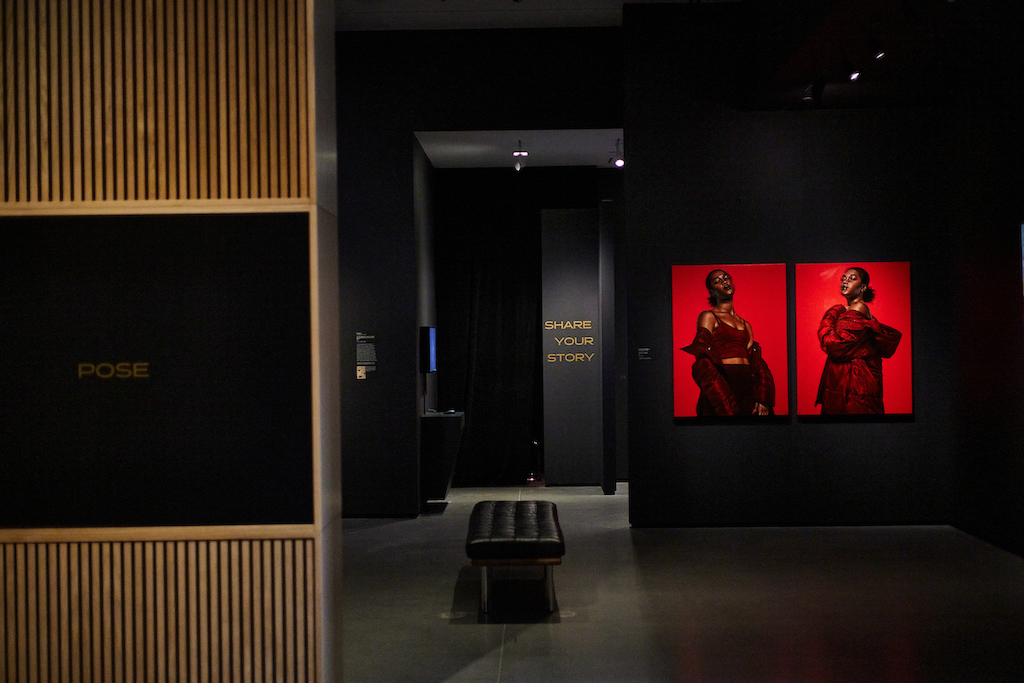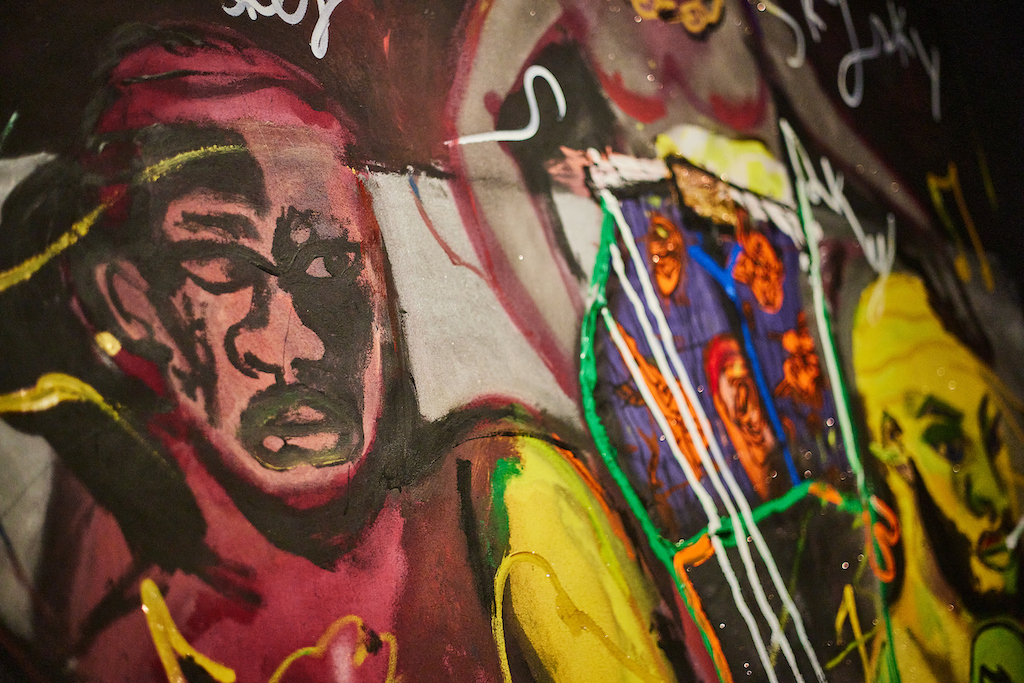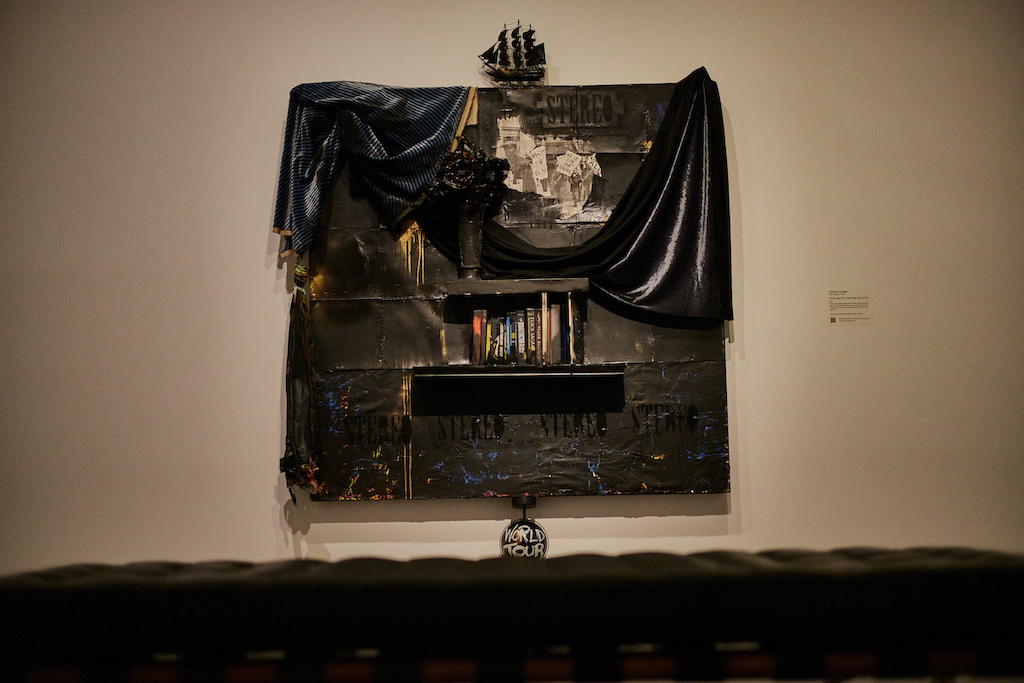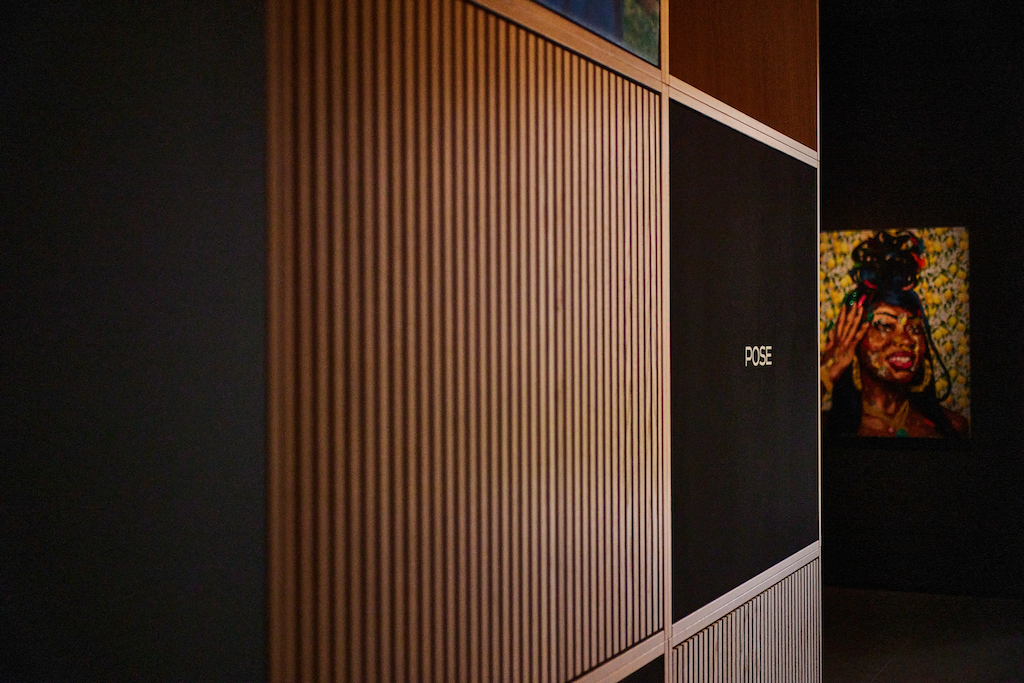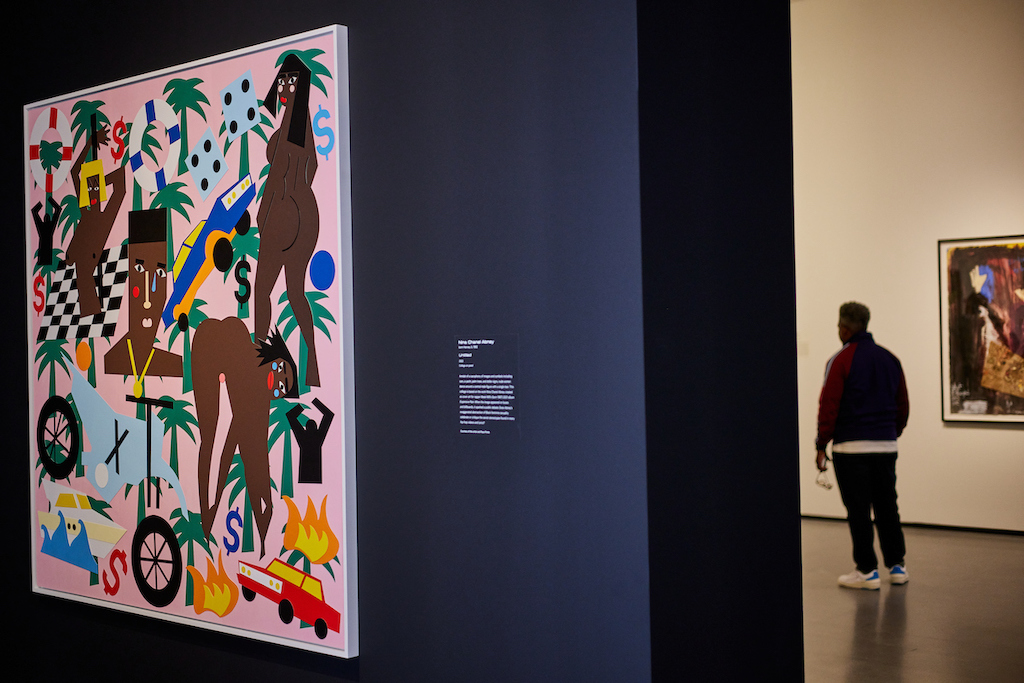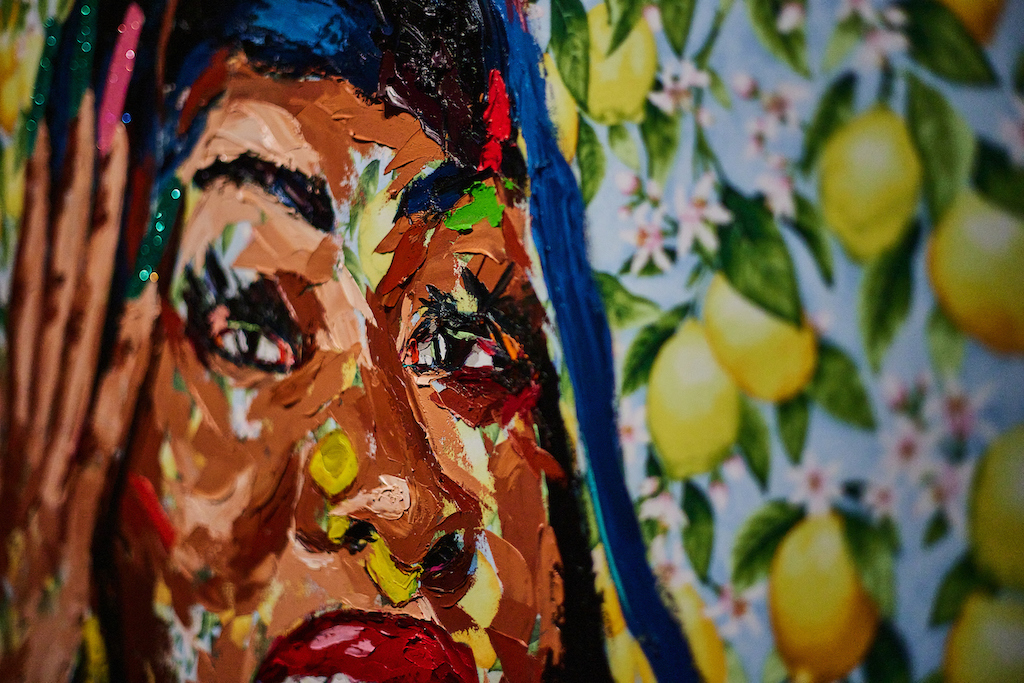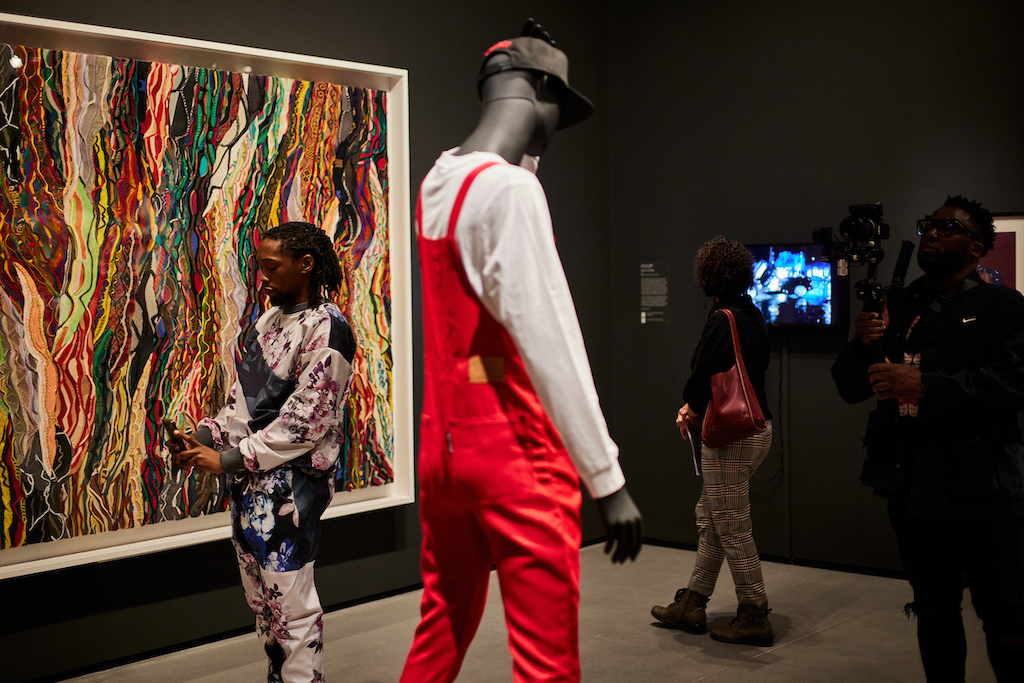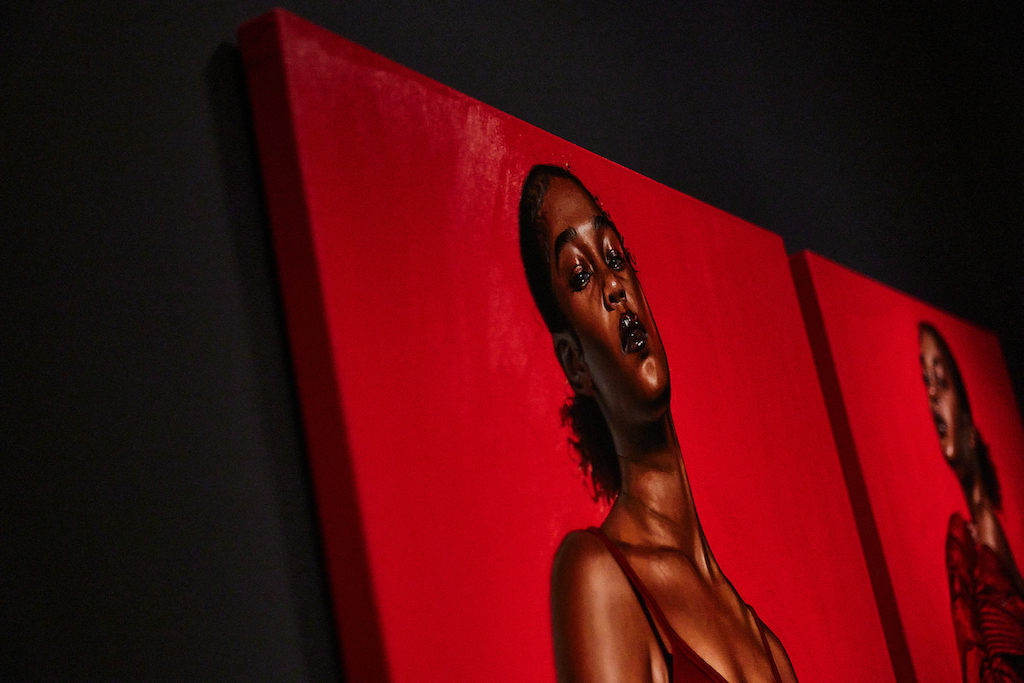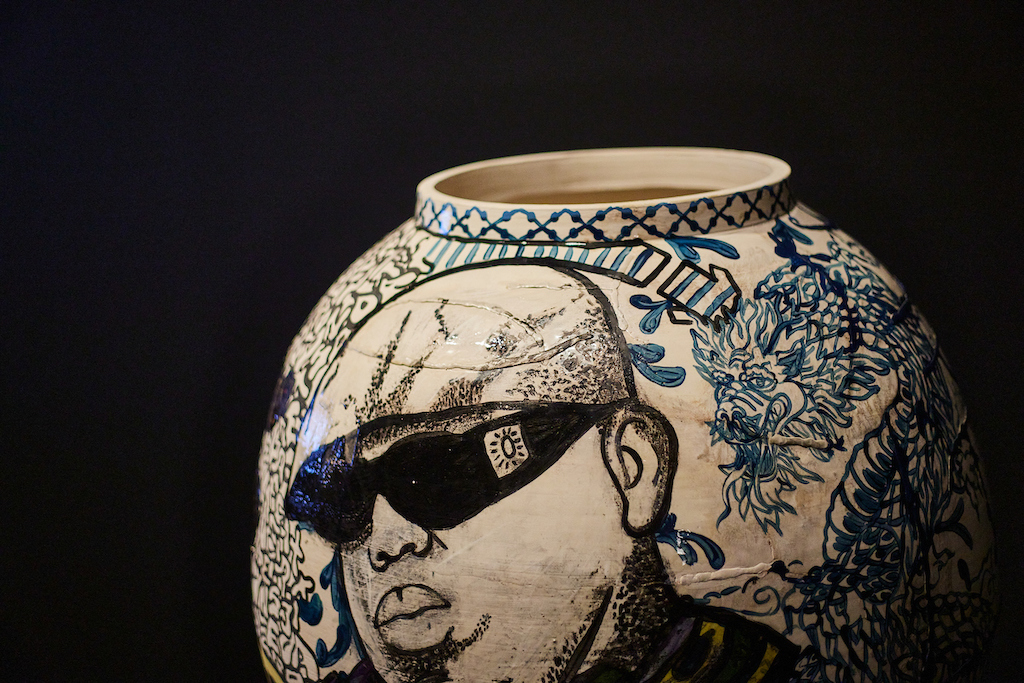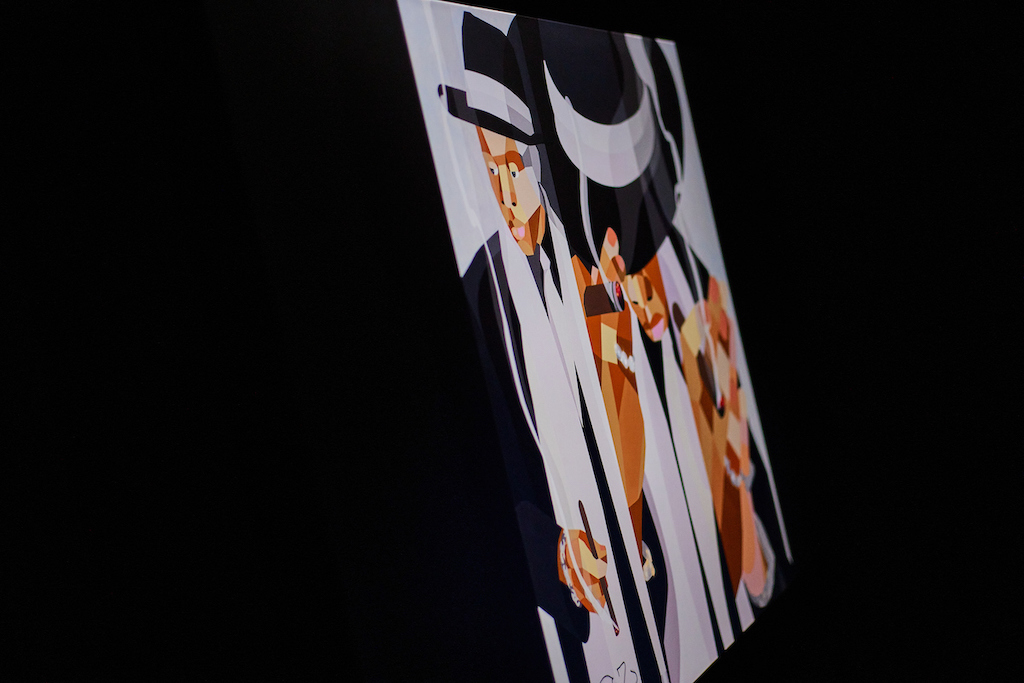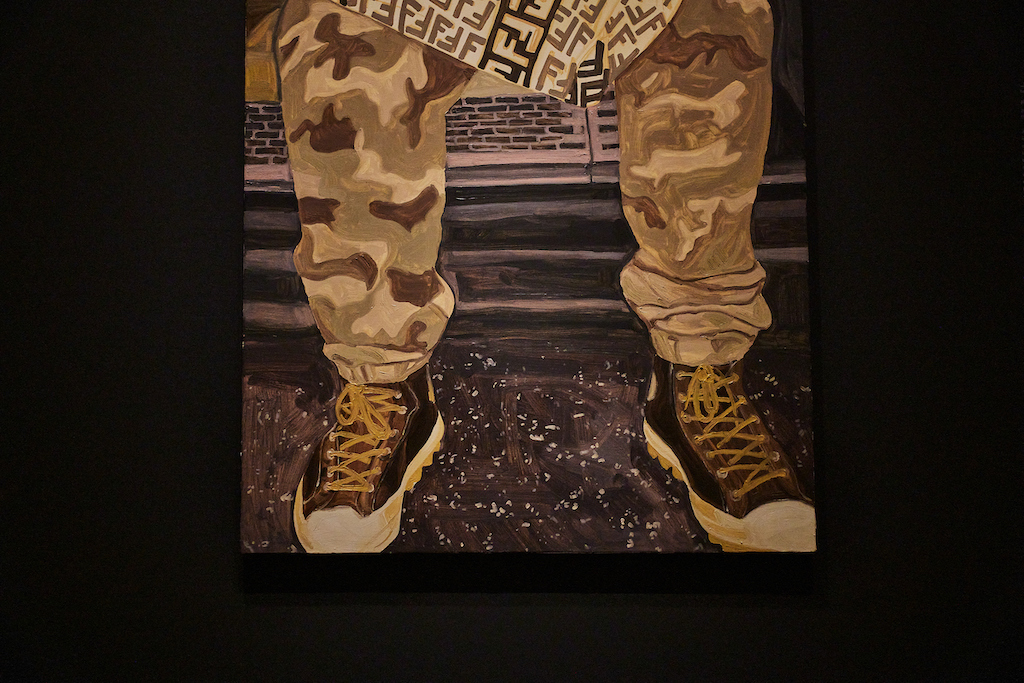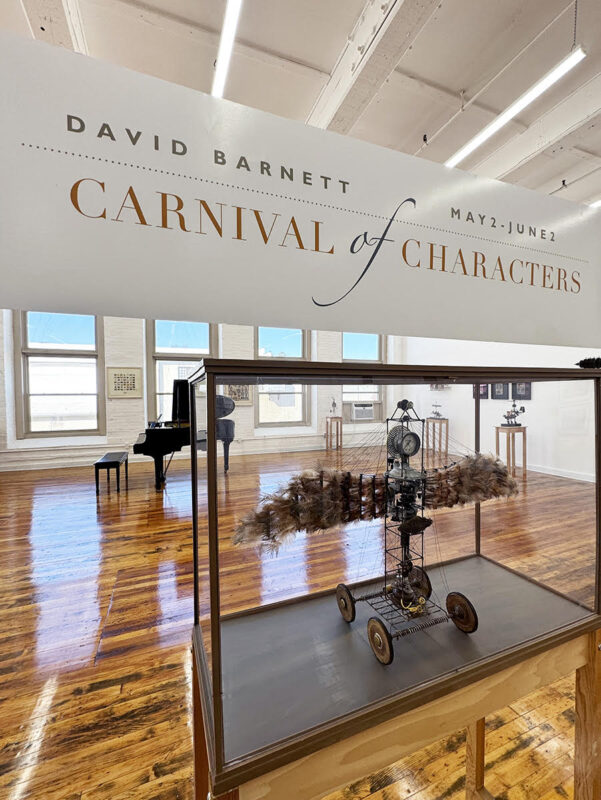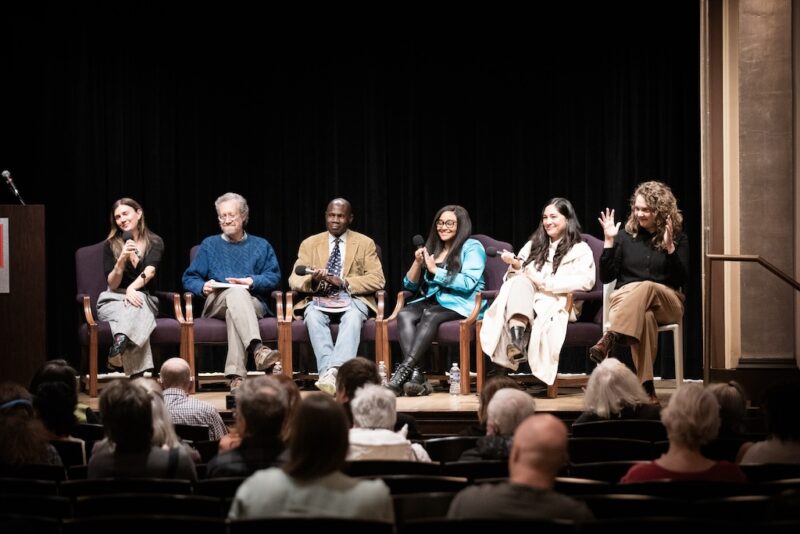Have you ever attended a museum exhibition where older white people are not just a minority in the galleries but a vast minority? Perhaps you have walked through a museum where hints of booming bass and snippets of contemporary Black music filter out of a dark video gallery, but placing it front and center in a major traveling exhibition? Mic drop.
In Baltimore, in a venerated house of culture, in a monumental gallery space where the height of the walls makes you feel tiny, the sound of hip hop reverberates. Arguably America’s most popular and significant cultural movement of the past fifty years, the beat bounces off of velvety charcoal-colored walls and gleaming concrete floors, blanketing a collection of paintings, photography, sculpture, fashion, album covers, designer bags, blingy-azz jewelry, and Air Jordans, in a shimmering energy. The message is clear: what was once relegated to the margins is now canon.
Opening this Wednesday at the BMA, after an entire weekend of jubilant preview events and parties, The Culture: Hip Hop and Contemporary Art in the 21st Century is a transformative, must-see exhibition. This is not just because it applies diligent anthropological research to contemporary art and popular culture, treating both as equals. And it is not just because it visually functions like a succession of nested jewel boxes, each more dazzling than the next as works of art emerge from a dramatic darkness. This exhibition is groundbreaking because it signals a new way forward for museums around the most coveted commodity in cultural institutions: relevance.
When our most respected establishments affirm popular music and fashion genres usually relegated to dance clubs and ephemeral fashion shows, placing it in an equitable conversation with a multitude of the best contemporary artists who have been inspired by it, this is nothing short of a revolution. In many ways, The Culture serves as a harbinger for a second Pop Art movement, one that promises to be incredibly popular, both in Baltimore and beyond.
